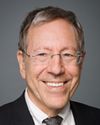It is very difficult to say because of lack of access to the Tibetan population and the areas. After 2008 there were several reports that hundreds—some say thousands—were arrested and put behind bars. Many of them met with long-term imprisonment. As UN Human Rights Commissioner Navi Pillay says, many have disappeared. That seems to be a reality.
So it is really difficult to put down numbers, but definitely it is in the hundreds, if not in the thousands. The Tibetan Centre for Human Rights and Democracy, which is an NGO, has come out with a report recently, and also the Tibetan Department of Information and International Relations has come out with a report specifically on the 2008 uprising, which lists hundreds of political prisoners who are still in prison.
The unfortunate part is that many more who are unknown have disappeared. Until you have access to Tibetan areas, we will never know how many are in prison and how many have disappeared.
On the other hand, the Chinese government continues to say that anyone is welcome to come to Tibet to see for themselves the socialist paradise they have built for Tibetans. The spokesman for the foreign ministry insists that the door to dialogue is open. I often say that if they show us the door, we will enter that door. Similarly, they say you are welcome to come, but when members of the parliaments of different countries—and I hope members of the Canadian Parliament will also have a delegation to visit Tibet and will make the request through the Chinese embassy here in Ottawa to go to Tibet to assess the situation.... It is very likely that permission will be denied.
Because of these difficult circumstances it is almost impossible to give you exact numbers. But definitely it is high in numbers, for the population, because there are so many prisons that we know of. Even a gulag is reportedly in Tibetan areas. When there are so many prisons, you have to have many prisoners as well.
I'm sure there are many Tibetans who are facing very difficult experiences and going through enormous suffering in prisons in Tibet.




